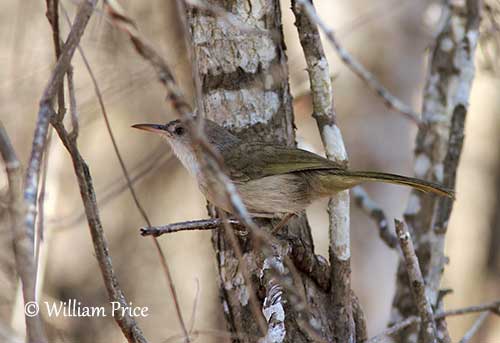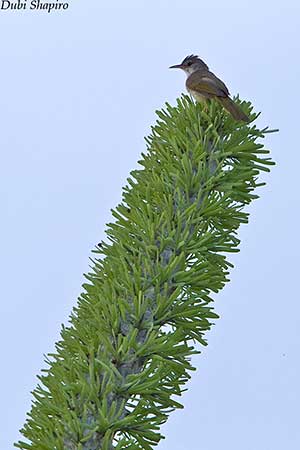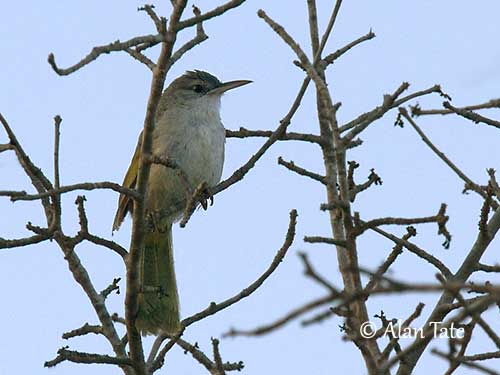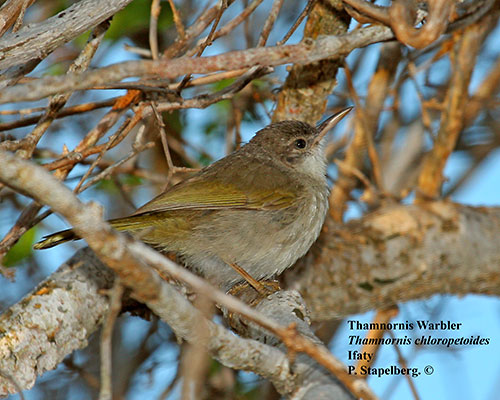
PROTECTION / THREATS / STATUS:
The Thamnornis is common throughout its restricted range. The population is suspected to be declining due to habitat destruction.
But currently, the Thamnornis is not globally threatened and evaluated as Least Concern.
Fr: Nésille kiritika - Kiritika malgache
Ang: Thamnornis - Thamnornis Warbler
All: Kiritikabuschsänger
Esp: Zarzalero Kiritika
Ita: Tamnornis
Nd: Kiritikazanger
Sd: spikskogsmadagaskarsångare
Mal: Aritiky
Photographers:
William Price
PBase-tereksandpiper & Flickr William Price
Dubi Shapiro
Dubi Shapiro Photo Galleries
Philip Stapelberg
GALLERY
Alan & Ann Tate
AA Bird Photography
Text by Nicole Bouglouan
Sources:
HANDBOOK OF THE BIRDS OF THE WORLD Vol 11 by Josep del Hoyo, Andrew Elliott and David Christie - Lynx Edicions - ISBN: 849655306X
The Birds of Africa: Volume VIII: The Malagasy Region: Madagascar, Seychelles, Comoros, Mascarenes - Par Roger Safford, Frank Hawkins – ISBN: 1408190494, 9781408190494- Editeur: A&C Black, 2013
Birds of Madagascar and the Indian Ocean Islands Par Roger Safford, Adrian Skerrett, Frank Hawkins – ISBN: 1472924118, 9781472924117- Editeur: Bloomsbury Publishing, 2015
Birds of Madagascar: A Photographic Guide Par Pete Morris, Frank Hawkins – ISBN: 0300077556, 9780300077551- Editeur: Yale University Press, 1998
Birds of the Indian Ocean Islands Par Ian Sinclair, Olivier Langrand - ISBN: 1868729567, 9781868729562- Editeur: Struik, 2003
CREAGUS - MALAGASY WARBLERS Bernieridae
Fatbirder - Bernieridae - Malagasy Warblers
Thamnornis
Thamnornis chloropetoides
Passeriformes Order – Bernieridae Family
INTRODUCTION:
The Thamnornis is endemic to Madagascar. It occurs in the dry SW region of the island, where it frequents dry forest, shrubland and spiny forest. It feeds on insects caught in low, dense vegetation. It moves through the ground-cover and can be seen in mixed-species flocks outside the breeding season.
The Thamnornis is fairly common throughout its restricted range, although the population is threatened by habitat destruction and slightly declining.
This species was formerly included in the family Sylviidae of the Old World warblers.
DESCRIPTION OF THE BIRD:
Biometrics:
Length: 15 cm
The Thamnornis has pale olive-brown upperparts and upperwing-coverts, and mostly olive-green uppertail-coverts. On the upperwings, the flight-feathers are grey-brown with dull olive-green edges. The long, graduated tail has 12 dull, olive-green rectrices, but the outermost feathers are brighter green with pale grey tips.
The underparts are whitish including chin and throat. The breast is tinged grey-brown.

The head is greyish-brown, with conspicuous whitish supercilium and dark eye stripe.
The fairly long, strong bill has dark grey to blackish upper mandible and yellowish-grey to dull pink lower mandible. The eyes are brown. Legs and feet are pale brown.
Male and female are similar.
The juvenile is duller with more uniformly grey plumage.
RANGE:
The Thamnornis occurs in the sub-arid region of S and W coast, S of Morondava and W of Port Dauphin.
HABITAT:
The Thamnornis frequents the spiny subdesert scrub, but in the northern part of the range, it is often found in the scrubby edges of the western deciduous forest. It is less frequently seen in low coastal euphorbia scrub. The species occurs from sea-level up to 800 metres of elevation.
CALLS AND SONGS: SOUNDS BY XENO-CANTO
The Thamnornis gives a rattling trill, but quieter than that of Nesillas typica.
It often sings from top of Didierea stem. The song is a long rattle (as call), a long series of harsh, ticking notes followed by a rapid “tewtewtewteetewteetewtee…” and lasting 10-30 seconds.

BEHAVIOUR IN THE WILD:
The Thamnornis feeds mainly on insects and caterpillars, including beetles, cockroaches and true bugs. It also catches spiders. It may occasionally consume plant seeds.
It forages in low, dense vegetation and catches preys from small branches. It also comes to the ground and takes food items from the leaf litter.
The Thamnornis skulks in the thick vegetation and moves through the ground-cover and the low vegetation. It regularly comes to the ground.
It can be seen alone or in pairs, but outside breeding season, it joins mixed-species foraging flocks. The birds are sometimes aggressive, and some fights may occur between adjacent individuals.
The courtship behaviour of this species is currently unknown.
The Thamnornis is sedentary on the island.
The flight often appears heavy, probably due to the large tail.

